Photos: Secret 'Hole' to Hide Priests Revealed in Tudor Mansion
Stunning architecture
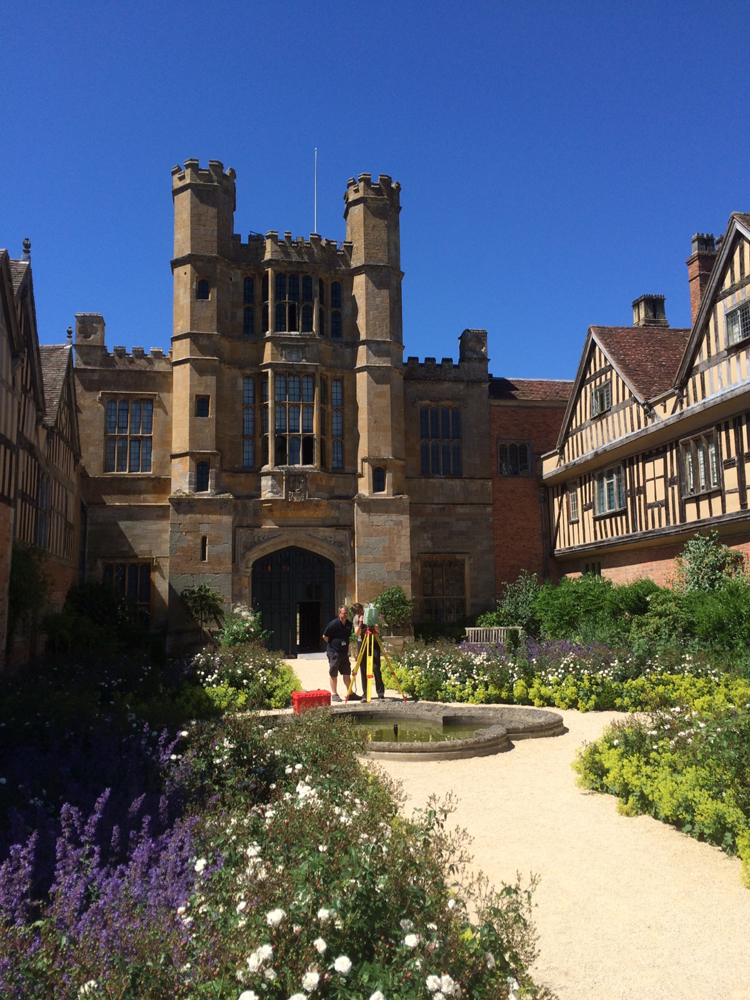
Researchers have precisely mapped a historic English country house with laser scanners in an effort to learn more about the construction of a secret "priest hole" in the tower of the gatehouse of the building.
Coughton Court in Warwickshire has been the ancestral home of the Throckmortons, an influential English Catholic family, since the Middle Ages. The oldest parts of the existing building date from the 14th century.
At some time during the anti-Catholic persecutions of the late 16th century in England, a hidden space known as a priest hole was constructed between the floors of the turreted tower on the right of this photograph. [Read full story about the hidden "priest hole"]
Unassuming room
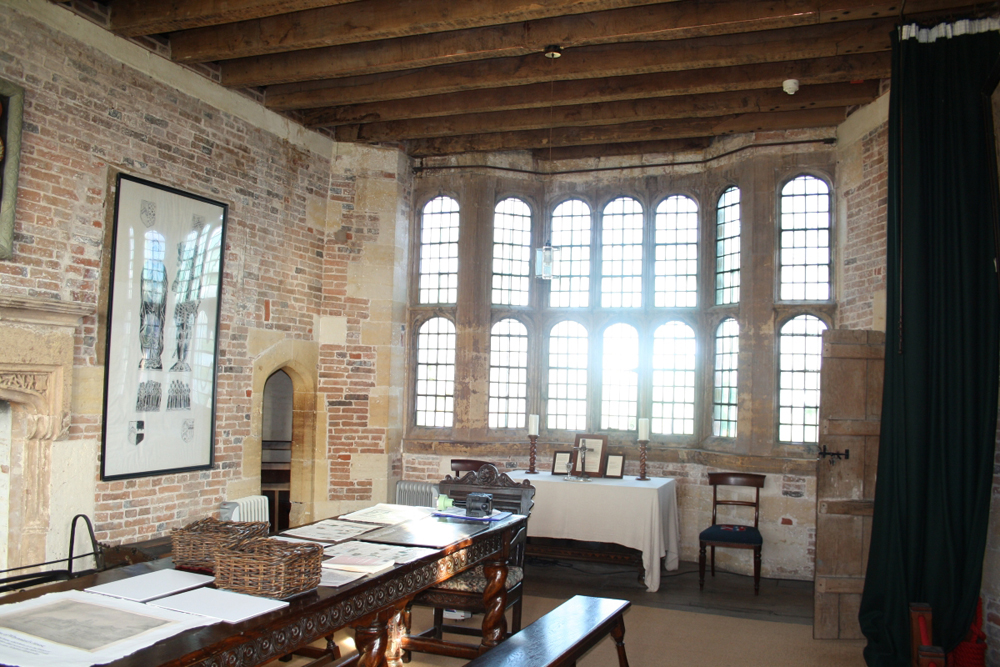
The secret priest hole cannot be accessed from below — only from above, through a trap-door in the turret, just beyond the door on the left of this room in the gatehouse.
The secret room was designed as a place for Catholic priests to hide from search parties enforcing the anti-Catholic laws enacted by England's Queen Elizabeth I.
The English heritage charity National Trust, which now owns Coughton Court, keeps this room open to the public. The secret entry to the priest hole is now exposed beneath a transparent cover. But, the room is at the top of a flight of spiral stairs, and many visitors to the historic house are unable to make the climb.
Hidden in plain sight
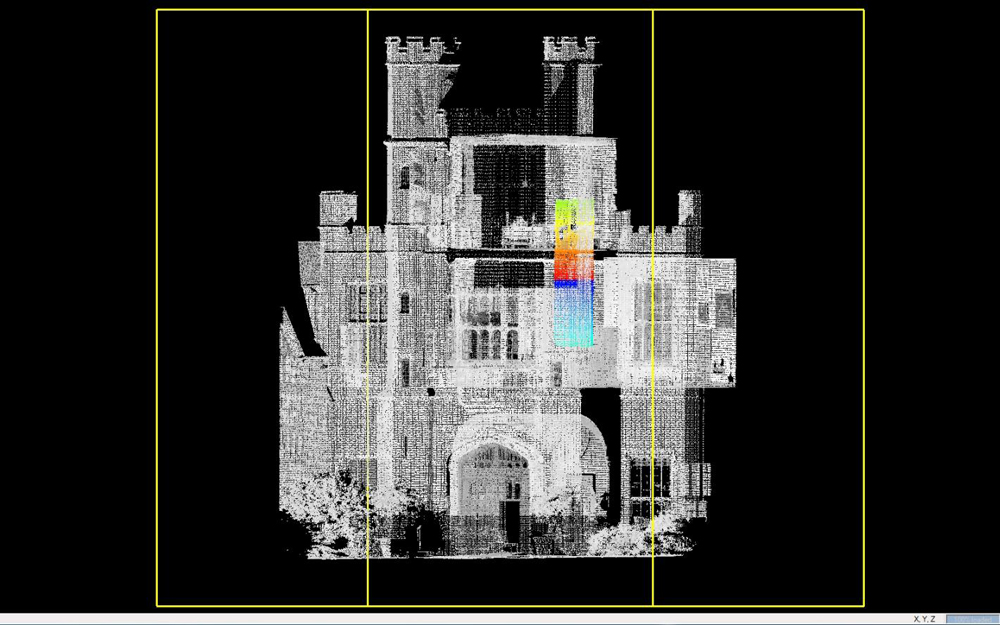
The 3D data from the laser scans has been combined to create a 3D model of the entire building that reveals how the secret priest hole (shown here in color) was hidden inside the pre-existing structure.
Tricking the trickster
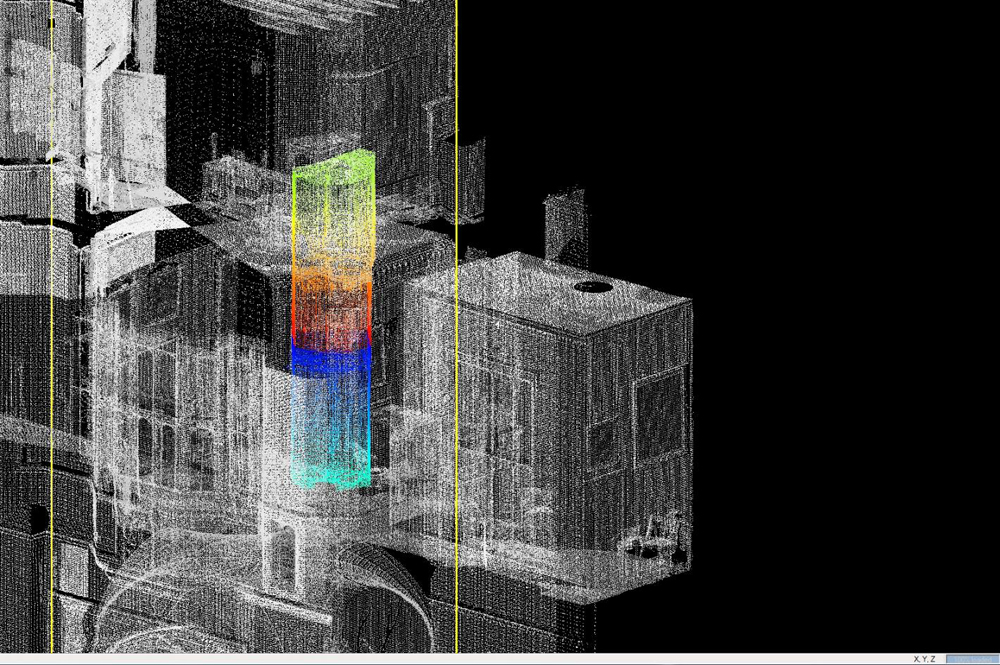
The scans show the "double blind" construction of the hidden space (shown here in orange, beneath the entrance to the turret, shown in green), which was designed to fool searchers into thinking they had discovered an empty priest hole.
But the priest could be hiding in a second secret space (shown here in blue and light blue) below a trap door in the upper priest hole.
A hiding place
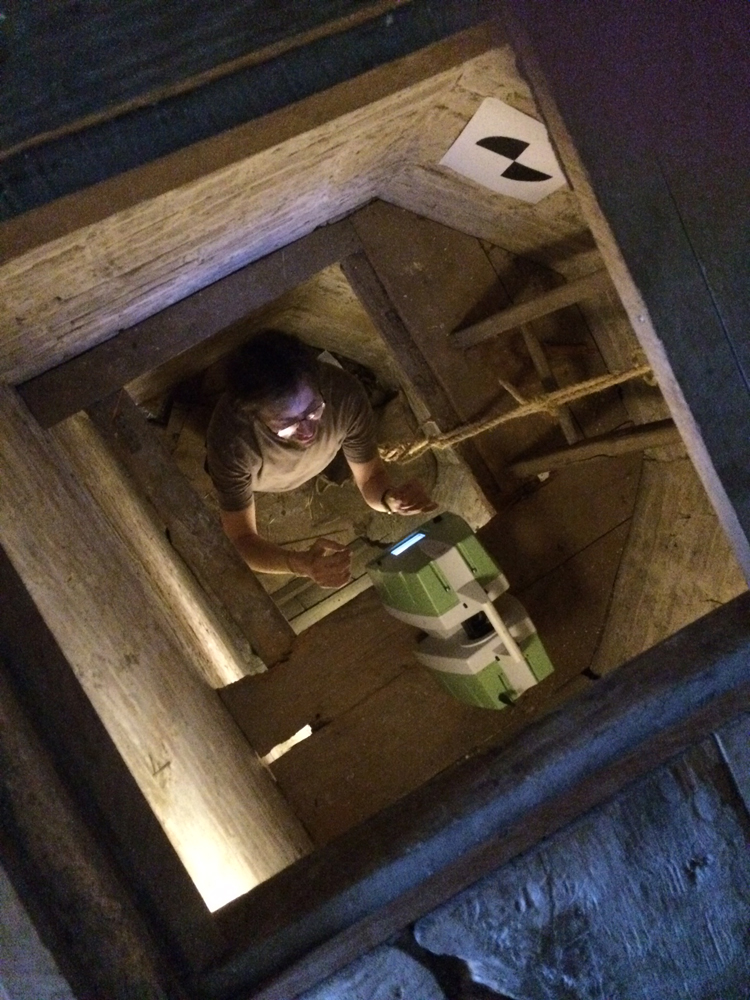
To reveal how the priest hole was constructed inside the pre-existing structure of the building, the researchers made precise 3D maps of the interior of the secret space with a Leica laser scanner.
Rebel architect
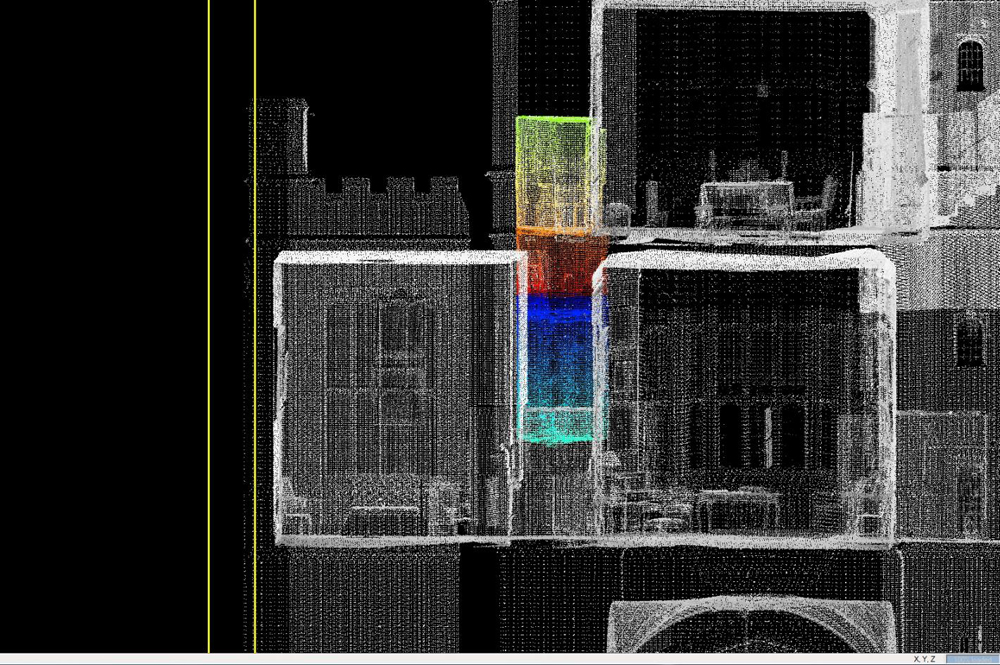
Under the anti-Catholic laws, priests faced torture and execution if they were captured by the Protestant Royal authorities, who enforced worship in the Church of England, the official state religion.
Historians think the priest hole at Coughton Court was built late in the 16th century by Nicholas Owen, a celebrated English Catholic spy, artificer and escape artist who is thought to have built more than 20 priest holes in the country houses of Catholic families around England.
A nefarious position
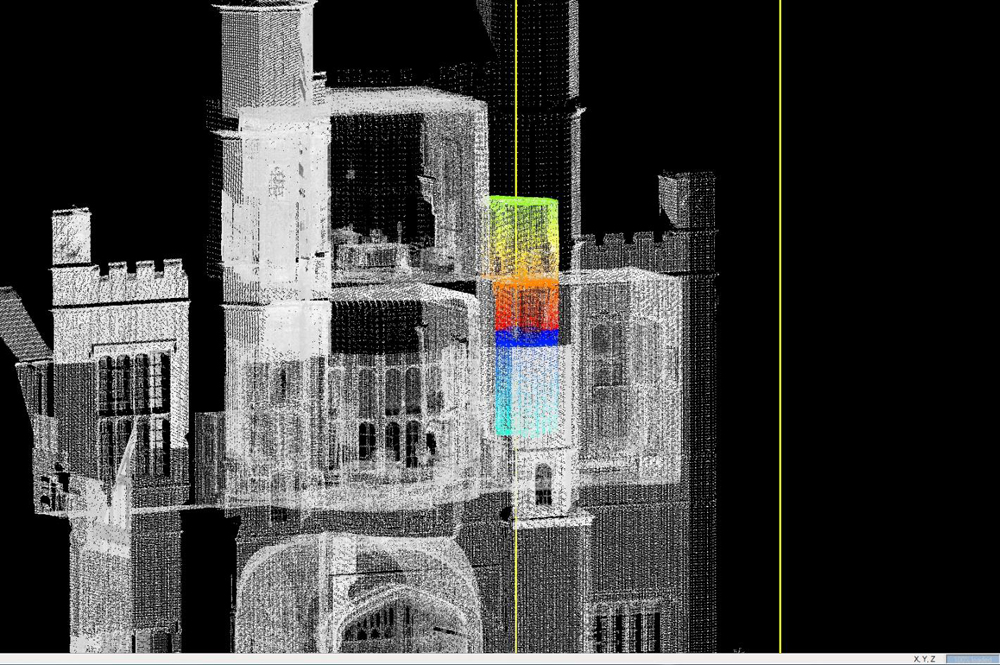
Catholic priests would travel in disguise around England, aided by a network of influential and wealthy English Catholic families.
More than 100 priests and other Catholics killed during the persecutions are today regarded as martyrs by the Catholic Church. One such person was Nicholas Owen, who constructed the priest hole at Coughton Court. He was captured in 1606 and died during torture in the Tower of London.
Sign up for the Live Science daily newsletter now
Get the world’s most fascinating discoveries delivered straight to your inbox.
Techy research
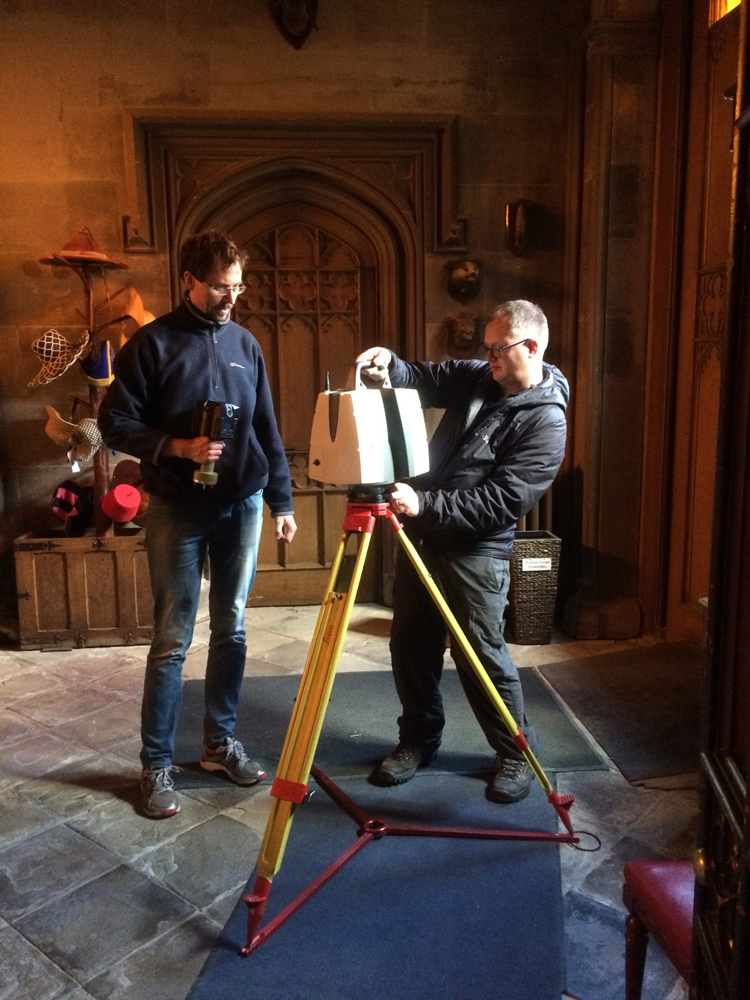
To show the surrounding structure of the house, archaeologist Chris King (right) and mapping specialist Lucasz Bonenberg (left) laser-scanned the interiors of all the rooms in the building, as well as the exteriors and the surrounding grounds.
Preserving history
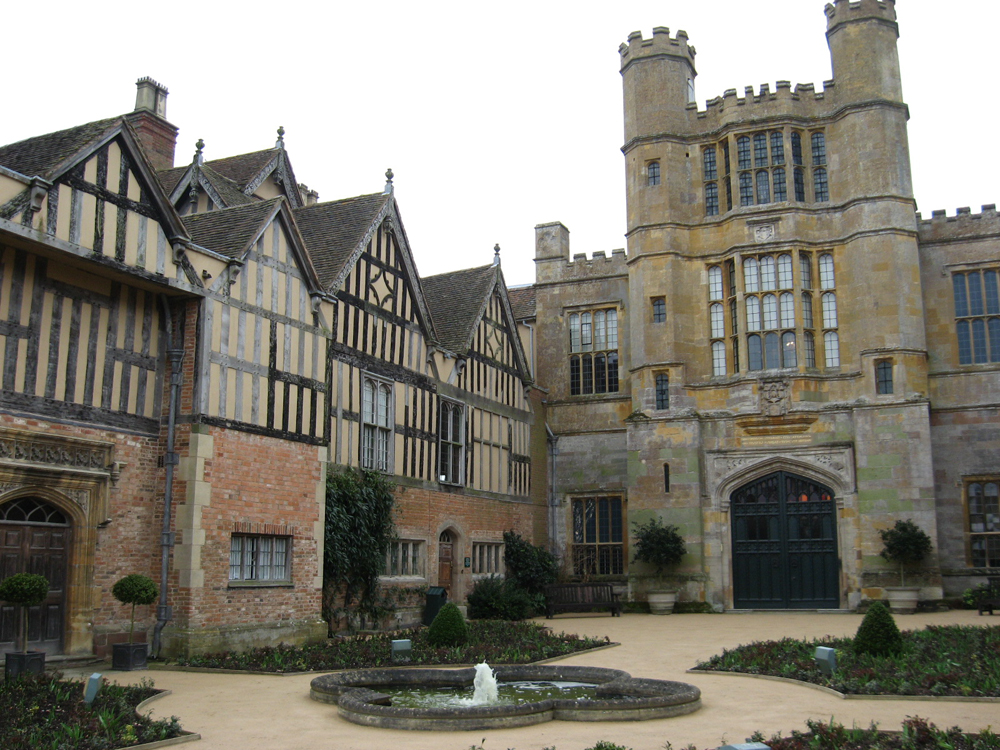
Coughton Court is now owned by the British heritage charity National Trust, which keeps it open to the public for much of the year as an historic building.
The 3D scans of the building and the hidden priest hole will now be used to help visitors understand the secret space – even if they are not able to make the climb to the towers of the gatehouse. The researchers hope to expand the project to investigate other priest holes in country houses around England.
Tom Metcalfe is a freelance journalist and regular Live Science contributor who is based in London in the United Kingdom. Tom writes mainly about science, space, archaeology, the Earth and the oceans. He has also written for the BBC, NBC News, National Geographic, Scientific American, Air & Space, and many others.









